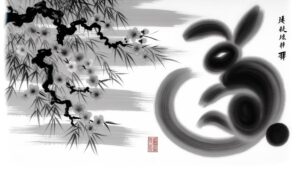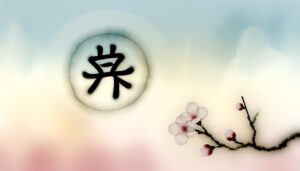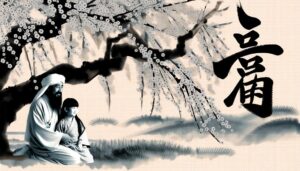What Is the Chinese Hand Symbol for Love?
The Chinese hand symbol for love is a deeply-rooted gesture, historically embedded in ancient Chinese culture and philosophies such as Confucianism and Taoism. This symbol signifies a rich tapestry of familial loyalty, compassion, harmony, and unity, evolving over centuries through various dynasties.
Interpreted both traditionally and contemporarily, it embodies emotional connotations of deep affection and enduring importance in relationships. Modern interpretations highlight its dynamic evolution through art, calligraphy, and digital mediums, showcasing its cultural fluidity.
Understanding this symbol offers profound insights into how love is expressed and valued in different contexts, inviting deeper exploration into its cultural significance.
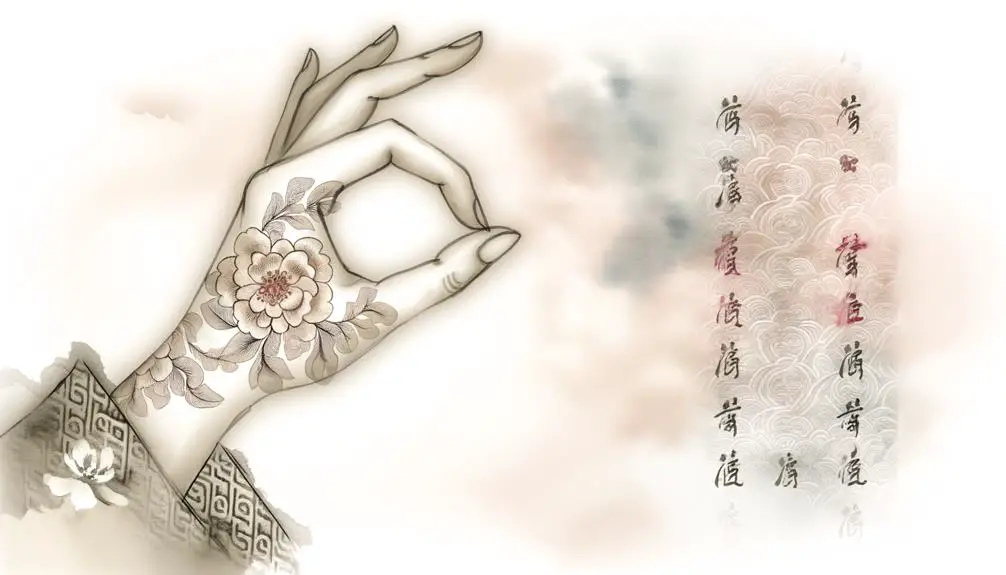
Key Takeaways
- The Chinese hand symbol for love is deeply rooted in ancient cultural practices and rituals.
- It conveys profound emotional connotations reflecting familial loyalty, compassion, and unity.
- The symbol has evolved to reflect contemporary values and broader interpretations of love.
- Artistic representations often feature the symbol in calligraphy, highlighting its aesthetic and emotional depth.
- In digital communication, the symbol integrates traditional customs with modern trends, enhancing global cultural inclusivity.
Historical Background
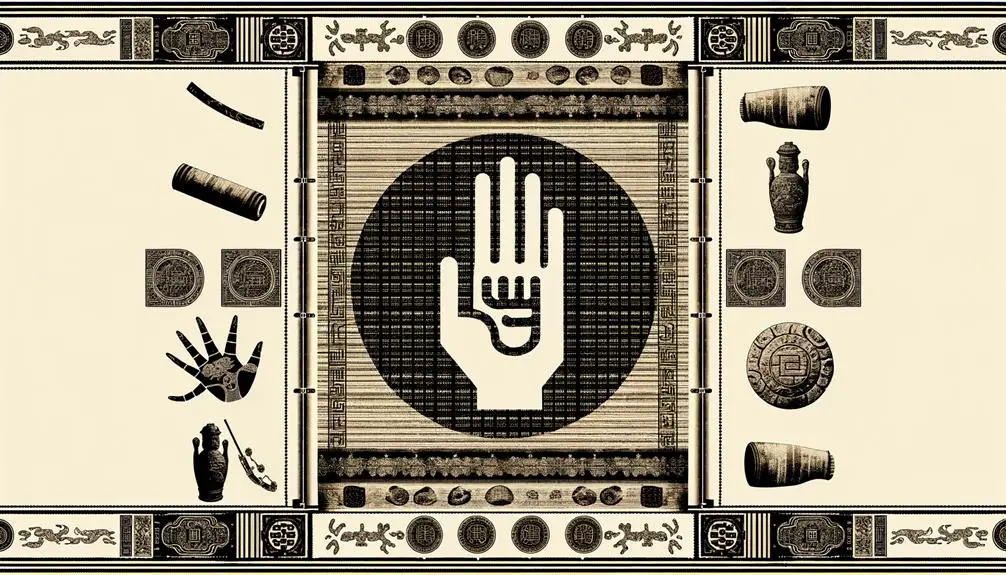
The historical background of the Chinese hand symbol for love can be traced back to ancient Chinese culture, where symbolic gestures played a pivotal role in communication and societal rituals.
This form of non-verbal communication was deeply embedded within the traditions of Confucianism and Taoism, which emphasized harmony and interpersonal relationships. Hand symbols were often used during ceremonial practices and were believed to convey profound emotions that transcended spoken language.
In the context of love, the specific hand gesture evolved over centuries, influenced by dynastic changes and cultural exchanges along the Silk Road. This evolution reflects the dynamic history of China, where gestures were adapted to fit the prevailing philosophical and social paradigms, thereby enhancing their cultural significance.
Symbolic Meaning
The Chinese hand symbol for love carries profound ancient cultural significance, often rooted in traditional philosophical and spiritual beliefs.
Over time, its interpretations have evolved, reflecting contemporary values and societal changes while retaining core emotional connotations.
Additionally, artistic representations of this symbol highlight its aesthetic versatility and the enduring importance of love in Chinese culture.
Ancient Cultural Significance
Dating back to ancient times, the Chinese hand symbol for love carries profound cultural significance, encapsulating deep emotional and philosophical meanings that resonate through centuries of tradition. Rooted in Confucian and Daoist philosophies, this gesture symbolizes not only romantic affection but also broader concepts of familial loyalty, benevolence, and universal compassion.
The hand gesture, often depicted in classical art and literature, conveyed intimate sentiments in a society where verbal expressions of love were restrained. Its intricate design, often involving interlocking fingers, reflects the harmonious balance and unity valued in Chinese culture.
The symbol's enduring relevance highlights its integral role in rituals, ceremonies, and interpersonal relationships, underscoring a timeless connection between the physical gesture and the profound essence of love.
Modern Interpretations Evolved
Modern interpretations of the Chinese hand symbol for love reveal a dynamic evolution in its symbolic meaning, reflecting shifts in contemporary cultural contexts and societal values. This ancient gesture, traditionally rooted in Confucian ideals of familial duty and emotional restraint, now embraces a broader, more inclusive connotation of love.
Influenced by globalization and modern communication, it signifies romantic love, friendship, and even self-love, transcending its original parameters. Additionally, the incorporation of this symbol into digital emojis and social media has amplified its reach, fostering a universal understanding.
The modern adaptation underscores the fluidity of cultural symbols, illustrating how traditional icons can be recontextualized to resonate with contemporary experiences and collective human sentiments.
Artistic Representations Explained
Examining the artistic representations of the Chinese hand symbol for love reveals how its nuanced symbolic meanings have been visually interpreted and culturally enriched over centuries. Traditional Chinese art often integrates this symbol into intricate calligraphy, where each stroke conveys both aesthetic beauty and emotional depth.
In modern times, the symbol has found its way into various mediums, from digital art to fashion, maintaining its cultural significance while adapting to contemporary contexts. The hand symbol, often depicted with fluid lines, embodies the essence of love—compassion, unity, and harmony.
Its presence in festivals, weddings, and everyday life underscores its enduring importance, reflecting an evolving yet steadfast cultural emblem of human connection and affection.
Cultural Significance

Rooted deeply in Chinese history and tradition, the hand symbol for love holds profound cultural significance, embodying a rich tapestry of linguistic, artistic, and social elements that have evolved over centuries.
Its origins can be traced back to ancient Chinese calligraphy and symbolism, where gestures and signs were integral to communication. In contemporary society, this hand symbol transcends mere expression, serving as a bridge between generations and a medium for conveying emotional depth.
It is prominently featured in festivals, rituals, and everyday interactions, illustrating the enduring importance of love and connection in Chinese culture. This symbol's persistent relevance underscores the harmonious blend of historical reverence and modern-day expression, reflecting China's complex and multifaceted cultural identity.
How to Make the Gesture
Mastering the Chinese hand symbol for love involves a nuanced understanding of both the physical gesture and its deep-seated cultural connotations. The gesture is crafted with deliberate precision, reflecting the profound cultural heritage it embodies.
To create this symbol:
- Form the base: Position the hand with fingers extended straight and close together.
- Curl the pinky and ring finger: These two fingers bend towards the palm.
- Cross the index over middle finger: This forms the heart shape, emblematic of love.
- Tuck the thumb: Rest it gently against the side of the hand.
- Hold with intention: Present the gesture with a mindful posture, acknowledging its cultural resonance.
Each step is imbued with significance, mirroring the intricate layers of Chinese cultural expressions of love.
Modern Interpretations
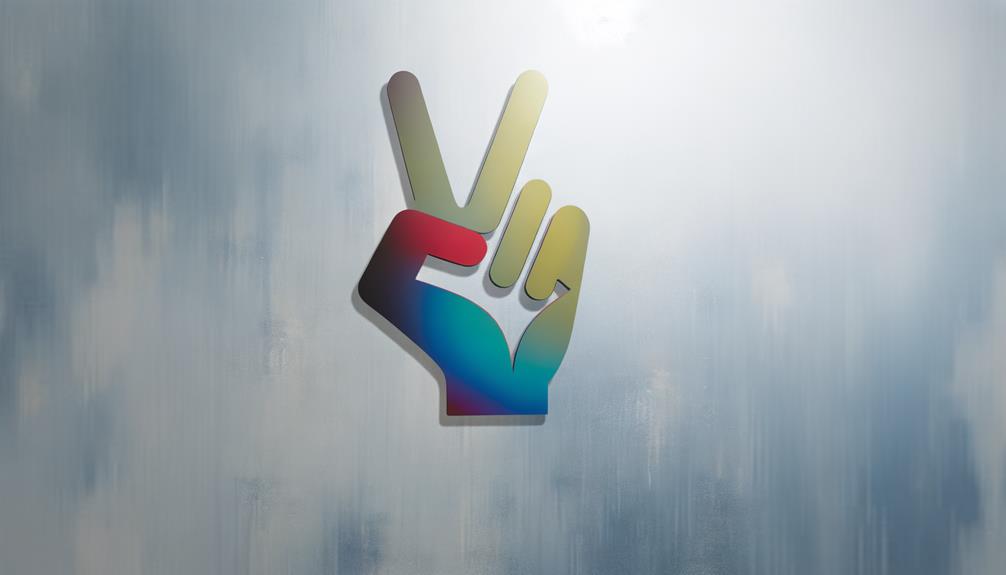
In the digital age, the Chinese hand symbol for love has transcended its traditional roots, finding new life through emojis and digital expressions of affection. This evolution highlights the dynamic nature of cultural symbols, adapting to contemporary modes of communication while retaining their intrinsic significance.
Understanding these modern interpretations offers a window into how traditional symbols maintain relevance and continue to foster connections in today's globalized society.
Emojis and Digital Love
The proliferation of emojis in digital communication has transformed the traditional expression of love, allowing a universal yet culturally nuanced dialogue that resonates across diverse communities. Emojis encapsulate emotions and symbols, bridging cultural and linguistic gaps.
Particularly, the heart emoji and its variants—such as the heart with an arrow or the beating heart—serve as digital shorthand for affection. This evolution reflects a broader cultural shift toward visual language, making expressions of love more immediate and accessible.
Key elements include:
- Heart emoji: Universally recognized symbol of love.
- Couple emojis: Represent romantic relationships.
- Heart with arrow: Signifies falling in love.
- Beating heart: Conveys intense emotion.
- Heart hands: Mimic the physical gesture of love.
Cultural Symbolism Today
Amidst the rapid globalization of communication, modern interpretations of cultural symbols have evolved to reflect the dynamic interplay between tradition and contemporary values.
The Chinese hand symbol for love, historically rooted in Confucian ideals of harmony and familial affection, now traverses digital landscapes with renewed significance.
In contemporary settings, this gesture bridges generational gaps, embodying both ancient wisdom and modern expressions of affection.
Its presence in social media, pop culture, and even international contexts underscores its adaptability and timeless resonance.
The symbol's ability to convey deep emotional connections in a succinct, visually compelling manner highlights its enduring cultural significance, offering a poignant reminder of how traditional symbols can be repurposed to meet the emotional needs of today's interconnected world.
Love in Chinese Art
Chinese art has long celebrated the profound emotion of love through intricate symbols, evocative imagery, and culturally rich narratives. This celebration is evident in numerous art forms, reflecting deep societal values and philosophical beliefs.
For instance, traditional Chinese paintings often depict harmonious couples, symbolizing marital bliss and fidelity. Additionally, literature and poetry are replete with poignant love stories, underscoring the emotional depth of romantic bonds.
Key elements often found in Chinese art to express love include:
- Lotus Flower: Symbolizes purity and the unfolding of love.
- Mandarin Ducks: Represent lifelong partnerships and marital happiness.
- Peonies: Connote romance and feminine beauty.
- Calligraphy: Elegant strokes often portray poems about love.
- Couplets: Decorative writing pieces expressing wishes for a harmonious relationship.
Comparisons With Other Cultures
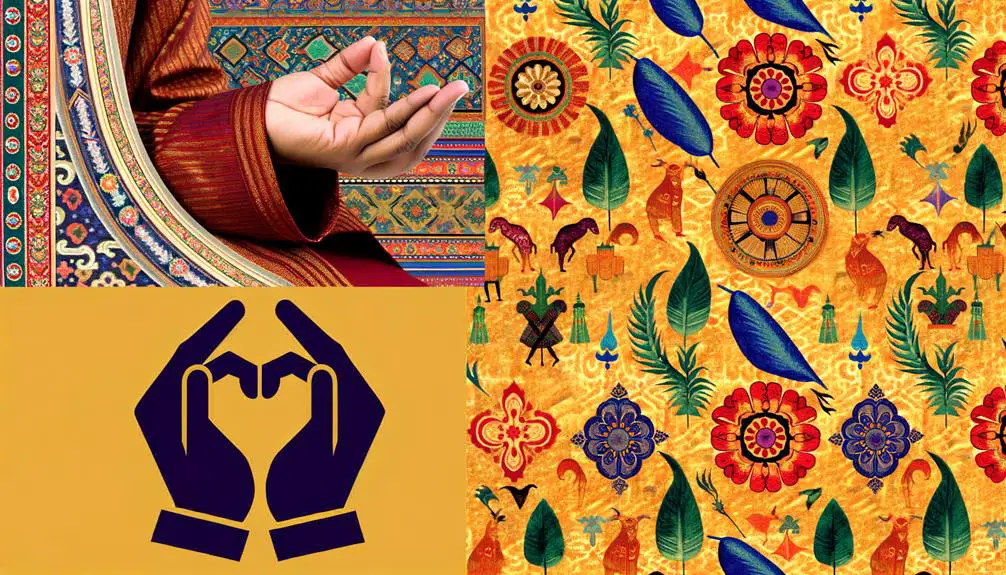
Drawing parallels between Chinese symbols of love and those found in other cultures reveals both unique expressions and universal themes in the portrayal of romantic affection. For instance, the Chinese hand symbol for love, often a delicate representation of a heart using fingers, contrasts with the Western tradition of heart shapes or the Japanese 'koi' fish symbolizing love and perseverance.
Similarly, India's intricate henna designs during weddings often include symbols of love like peacocks or lotus flowers. These cultural symbols not only embody romantic affection but also reflect societal values and historical contexts. Analyzing these symbols provides a richer understanding of how different societies articulate love, yet all converge on the profound human experience of connection and affection.
Symbol in Digital Communication
In the world of digital communication, the Chinese hand symbol for love has found new relevance and significance, often manifesting as emojis or digital stickers, which serve as culturally nuanced expressions of affection. This digital adaptation offers a bridge between traditional gestures and modern communication, enriching conversations with deeper cultural context.
Key aspects include:
- Cultural Integration: Seamlessly blends traditional Chinese customs with global digital trends.
- Emotional Expression: Enhances the emotional depth of online interactions.
- Accessibility: Makes cultural symbols accessible to a global audience.
- Visual Language: Contributes to the expanding visual lexicon of digital communication.
- Inclusivity: Promotes cultural understanding and inclusivity in digital platforms.
This evolution underscores the symbol's enduring significance, highlighting its adaptability and cross-cultural appeal.
Conclusion
The Chinese hand symbol for love, rooted in historical traditions, transcends mere gesture, embodying profound cultural and emotional resonance. Examining its evolution from ancient scripts to contemporary digital communication reveals its enduring significance.
The symbol not only reflects the cultural ethos of love but also establishes a universal connection, akin to the timeless appeal of vinyl records in a digital age. Therefore, its continued relevance underscores the intricate interplay between tradition and modernity in cultural expressions of affection.


